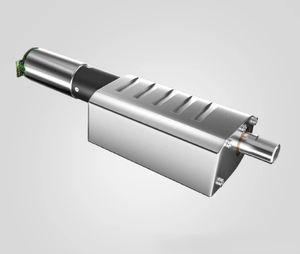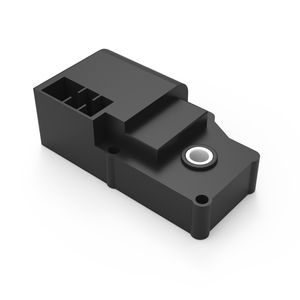
- Power Transmission - Mechanical components
- Motor and Motor Control
- DC motor
- Shenzhen ZhaoWei Machinery & Electronics Co., Lt

- Company
- Products
- Catalogs
- News & Trends
- Exhibitions
DC motor synchronous12 Vhollow-shaft

Add to favorites
Compare this product
Characteristics
- AC/DC
- DC
- Type
- synchronous
- Voltage
- 12 V
- Configuration
- hollow-shaft, small
- Applications
- for electrohydraulic brake
- Other characteristics
- emergency
- Intensity
1.2 A
- Torque
0.0118 Nm
(0.0087 ft.lb)- Rotational speed
2,900 rpm
(18,221.24 rad.min-1)- Operating temperature
Min.: -20 °C
(-4 °F)Max.: 85 °C
(185 °F)
Description
Every driver sooner or later finds himself/herself in a situation where an emergency braking is necessary. Emergency braking or even braking on a wet or slippery surface can cause the wheels of the vehicle to lock. Locking wheels reduce the adhesion between tires and the road surface and make the vehicle unsteerable. The antilock braking system (ABS) motor from ZHAOWEI prevents the wheels from locking and enables safe braking.
Operation principle of the antilock braking system
The hydraulic unit is the central component of an ABS system. It includes valves that control braking pressure at each individual wheel, a return pump, and an electronic control unit. In addition, each of the four wheels has a wheel-speed sensor. They measure the speed of each wheel and transmit this information to the control unit. If a wheel is about to lock under heavy braking, the system reduces the braking pressure on that single wheel until the threat of locking is past. Once the wheel turns freely again, brake pressure is again increased. This increase and release of pressure continues until the driver reduces the force applied to the brake pedal, or until the tendency to lock is overcome – if there is more grip on the road surface, for instance. Depending on the particular system, the brake pedal may pulsate.
- The intervention of ZHAOWEI 's ABS pump motor will happen when the speed differential indicates that the wheel is sliding. The braking will be adjusted by the pressure release and recover in the ABS drive and the braking force will be adjusted via the micro-drive system controller.
VIDEO
Catalogs
No catalogs are available for this product.
See all of Shenzhen ZhaoWei Machinery & Electronics Co., Lt‘s catalogsOther Shenzhen ZhaoWei Machinery & Electronics Co., Lt products
Automobile Drive
Related Searches
- Electromotor
- Vehicle motor
- Direct current motor
- Synchronous motor
- Electric gearmotor
- Multipole motor
- DC gearmotor
- 24 V electromotor
- BLDC motor
- IP55 motor
- High-efficiency electromotor
- Industrial gearmotor
- Coaxial electric gearmotor
- 24 V gearmotor
- Planetary electric gearmotor
- Ultra-compact motor
- 12 V electromotor
- Gear train electric gearmotor
- Right angle gearmotor
- Pump motor
*Prices are pre-tax. They exclude delivery charges and customs duties and do not include additional charges for installation or activation options. Prices are indicative only and may vary by country, with changes to the cost of raw materials and exchange rates.











